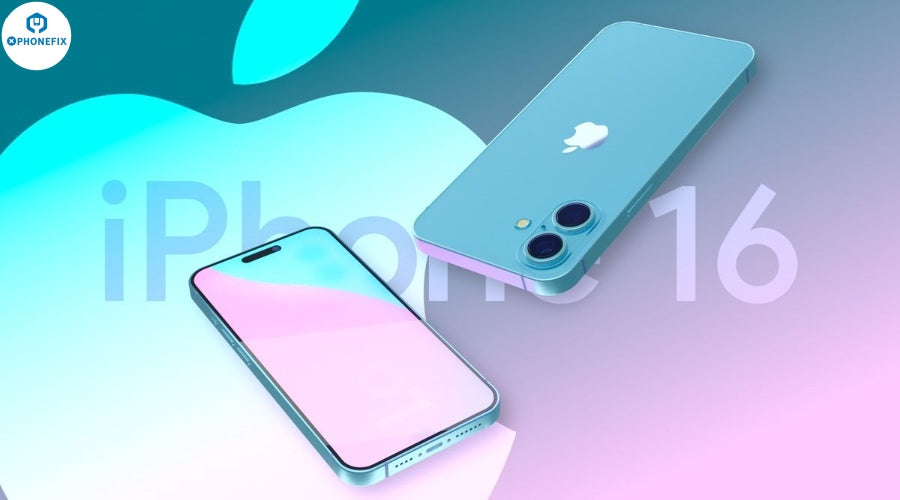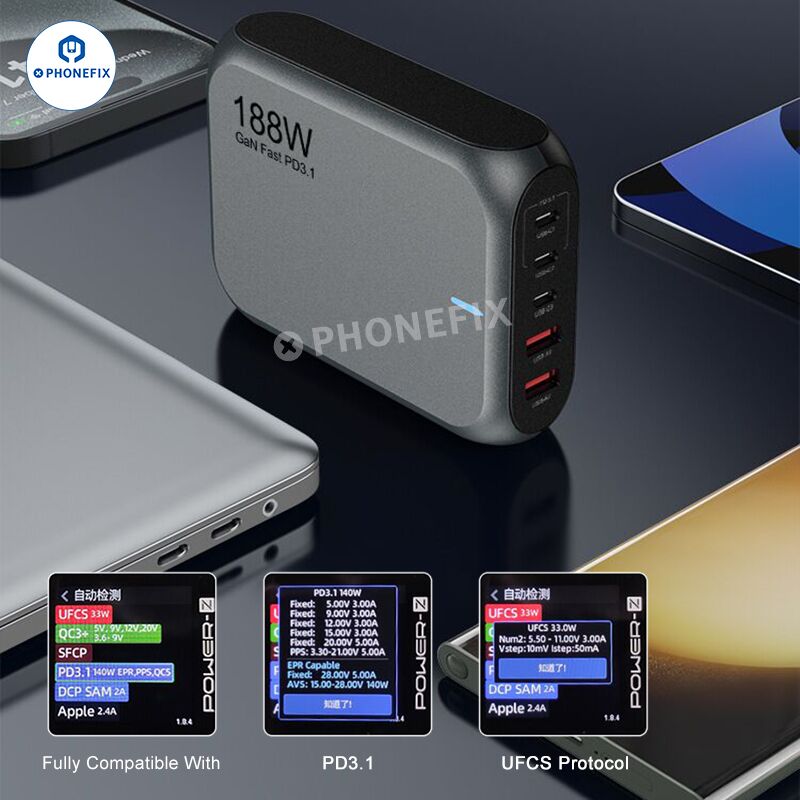In the early morning of September 10th, Beijing time, Apple held a fall new product launch conference and officially launched the iPhone 16 series; currently, the price of the Chinese version of the iPhone 16 series has been announced; Apple's official website in China shows that the official version of iOS 18 and iPadOS 18 will be pushed on September 17. Below, Phonefix will give you a summary of the three highlights of this conference.
1. A18/A18 Pro Chip Highlights:
The A18 Bionic chip is designed specifically for the iPhone 16 and has achieved a qualitative leap in performance. The A18 chip uses a 6-core CPU architecture, including 2 high-performance cores and 4 energy-efficient cores. Compared with the previous generation A16 Bionic chip, the running speed has increased by up to 30%, and compared with the A14 Bionic chip of the iPhone 12.
It has achieved a significant growth rate of 60%. In addition, the A18 is also equipped with a desktop-level GPU architecture with a 5-core GPU. Its performance is 40% faster than that of the iPhone 15 and twice that of the iPhone 12. At the same time, it is more energy-efficient and can reduce power consumption by 35% while maintaining the same performance.
The A18 chip also excels in energy efficiency, with power consumption 30% lower than the A16 Bionic chip. In addition to CPU and GPU upgrades, the A18 is also equipped with a 16-core neural engine, which is specially optimized for running large generative models. Compared with the previous generation, the A18 can process machine learning tasks up to twice as fast as the previous generation. In addition, the A18 also has 17% more system memory bandwidth than the previous generation, which means it can access generative models more efficiently.
The A18 Pro chip is tailor-made for the iPhone 16 Pro series. The A18 Pro is equipped with 2 high-performance cores and 4 energy-efficient cores. Compared with the A17 Pro, its processing speed has increased by up to 15%, while maintaining the same performance output, the energy consumption has been reduced by 20%.
In terms of graphics processing, the A18 Pro uses a new 6-core GPU architecture, which improves the performance by 20% compared to the A17 Pro. At the same time, the chip also has powerful video encoding capabilities and supports double data processing speed. It is worth mentioning that the A18 Pro is the world's first smartphone chip using second-generation 3-nanometer transistors.
Not only that, the A18 Pro is also equipped with a larger cache. At the same time, the chip also integrates advanced media functions, supports ProMotion and Always-On display technology. In addition, the A18 Pro also provides faster USB 3 transfer speeds and ProRes video recording capabilities.
2. iPhone 16 Pro and Pro Max iPhone Screen Size and Battery:
Some pre-iPhone 16 Pro rumors suggested that Apple might introduce a new camera sensor designed specifically for the iPhone 16 Pro Max, or introduce a new super zoom feature, but this did not happen. In fact, both models are equipped with the same 48-megapixel "Fusion" camera with an aperture of f/1.78, and the same 12-megapixel telephoto lens with an aperture of f/2.8. Both models have upgraded 48-megapixel ultra-wide-angle cameras to let in more light and support higher-quality macro photos.
The iPhone 16 Pro models all use the same camera technology, and the only differences between the two new phones are display size, starting storage capacity, and battery life. The iPhone 16 Pro starts with 128GB of memory, while the iPhone 16 Pro Max starts with 256GB of memory, with no 128GB option. The maximum storage capacity of both is 1TB.
The iPhone 16 Pro has a 6.3-inch display, while the iPhone 16 Pro Max has a 6.9-inch display. As for iPhone Battery life, the iPhone 16 Pro can last up to 27 hours when playing video, while the iPhone 16 Pro Max can last up to 33 hours.
3. iPhone 16 Series Camera Control Keys:
One of the highlights is the new camera control key, which is located below the power button on the right side of the iPhone 16 series. Unlike other buttons on the iPhone 16, the camera control key has capacitive and pressure sensing functions, is slightly concave, covered with sapphire crystal and surrounded by a stainless steel ring. These designs enable the button to recognize touch gestures and different levels of pressure, and provide tactile feedback by interacting with the iPhone's Taptic Engine.
The main functions of the camera control key are related to taking photos and recording videos, and can be used whether the device is in landscape or portrait mode. It supports multiple actions:
Single click: Open the camera app or a compatible third-party app.
Single click in the camera app: Take a photo.
Single click and hold: Open the camera app and start recording a video.
Press once: Lock focus and exposure (expected to be launched in Fall 2024).
Double click: Open a simplified menu that allows users to select different controls, such as exposure or depth of field Swipe along the surface: Adjust parameters such as zoom, exposure or depth of field.
As part of the new visual intelligence feature, users can get relevant information by pointing to an object or location of interest and clicking and holding the camera control key. For example, pointing to a restaurant can view ratings or business hours, or extract calendar events from a flyer.
The camera control key can also be integrated with services such as ChatGPT to search for content. In addition, developers of third-party apps such as Snapchat will be able to take advantage of this button, such as adjusting white balance and setting focus, although these features will not be available until fall 2024.
Users can also adjust settings related to the camera control key, such as click sensitivity and double-click speed. At the same time, the new button is also compatible with iPhone Mobile Phone Cases launched for the iPhone 16 series.












